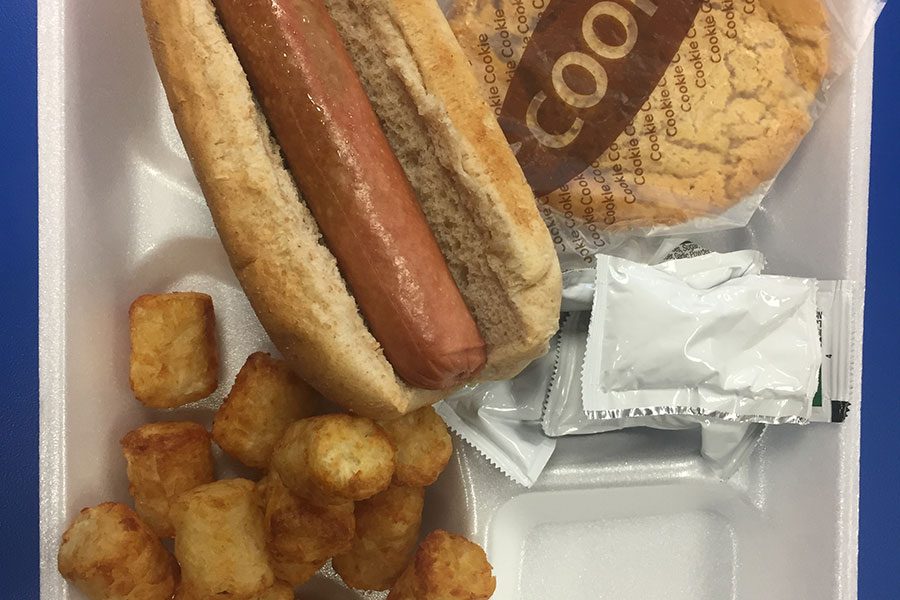School lunches, more than a meal
January 31, 2019
Many students at HBHS and across the country choose to skip the vegetables offered at the cafeteria.
School lunches are notoriously bad. Elementary school through high school students across the country ritually complain about their cafeteria lunches, and parents often have their own horror stories. Despite an almost universal displeasure with the current state of school lunches, change is laboriously slow. Publicly funded school lunch standards have been a significant political issue in Washington for some time, and the result is a system that few people are in favor of.
HBHS is like most other schools in that the cafeteria food is unpopular.“They’re not good for kids with dietary restrictions,” said Renee Franzini ‘20. “I don’t think enough school lunches are actually worth the price” said Olivia DiPrizio ‘20. HBHS student council has even considered the issue, but it proved impassable. Jennifer Given, HBHS history teacher notes that it is a multifaceted issue. “The first component is finding funding to make up the difference for free and reduced lunch, because free and reduced lunch has all kinds of federal requirements for nutrition, and if you can find the funding for [that], then you need money to upgrade the kitchen facilities — and the upgrade would have required a bond,” said Given.
Regulations from the federal level play a significant role. In 2010, President Obama passed the Healthy, Hunger-Free Kids Act, which increased funding for school lunch subsidies and introduced new requirements on fats, calories, fruits and vegetables in school meals. The bill saw initial support, and coincided with First Lady Michelle Obama’s Let’s Move program. However, problems emerged. Although actual consumption of fruits and vegetables has seemed to increase, evidence suggested that kids are throwing away some of these federally mandated fruits and veggies.
Additionally, research suggests that sugar, not fat, is the real problem in American diets. For example, one study found that over 30 years, switching 5% of calorie intake from saturated fat to monounsaturated led to a 27% decrease in death — of any kind. However, not all fats are bad, according to Heart.org, fats are “essential to give your body energy.”
In December, the Trump administration rolled back some of these Obama era guidelines. The United States Department of Agriculture (USDA) relaxed requirements for whole grains, and allowed more flavored milks and sodium. However, this too appears to be more of a political move, and is highly unlikely to fix the problem.
America as a whole has an increasingly unhealthy relationship to food. The Center for Disease Control and Prevention (CDC) reports that the US obesity rate is close to 40%, and costs $147 billion annually in medical bills. Heart disease, which has been linked to obesity, is the leading cause of death in the United States. Compared to other countries, the US eats the most fast food as well.
School lunches are also very important for low income children. For many of the 30 million children that receive reduced lunch, it is a major source of nutrition. When school is out, these children may not have enough to eat. When the government and schools plan what they are going to serve, it is important that they consider that school lunch may be the most nutrition a kid gets all day.
School lunches, like everything else in school, has a great capacity to shape the habits of children. If the US is serious about tackling obesity, it has to start with the youngest generation. The harsh rules that the federal government places on cafeterias are not helping. Part of the school curriculum needs to be learning a healthy relationship to food, balancing taste and nutrition. Kids eat the “healthy food” at school, and are turned off to it, averting them from future good choices.
